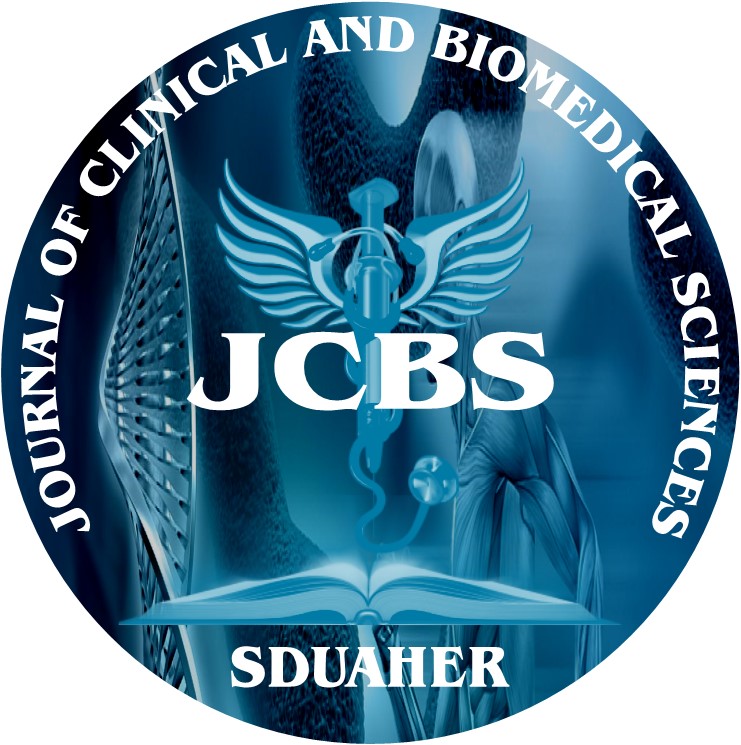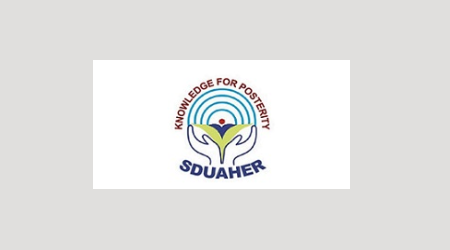


Journal of Clinical and Biomedical Sciences
Year: 2022, Volume: 12, Issue: 4, Pages: 123-124
Editorial
Natarajan Arvind 1,∗
1 Professor & HOD, Department of Microbiology, Sri Devaraj Urs Medical College, Sri Devaraj Urs Academy of Higher Education and Research, Tamaka, Kolar, 563101, Karnataka, India
*Corresponding author email: [email protected]
Received Date:12 December 2022, Accepted Date:14 December 2022, Published Date:25 December 2022
NA
Monkeypox (MPX) is a rare viral zoonotic disease caused an by enveloped double-stranded DNA monkey pox virus belonging to the genus orthopoxvirus and family Poxviridae. There are two distinct genetic clades of monkeypox virus namely West African clade and central African clade. Monkeypox is endemic to western and central Africa. The disease has made headlines globally due to increasing number of cases being reported from North America and European countries. There are 6 reported cases of MPX in India as on 31st July 2022.
Monkeypox was first discovered in 1958 when two outbreaks of a pox-like disease took place in colonies of monkeys kept for research. The source of the disease is not clear despite being named “monkeypox”. However, African rodents and non-human primates (like monkeys) may harbor the virus and infect people. The evidence of monkeypox virus infection has been observed in animals including squirrels, Gambian pouched rats, dormice, different species of monkeys and others. The natural reservoir of monkeypox has not yet been identified, but likely to be rodents.
The first human case of monkeypox was documented in1970. Since then, monkeypox has been reported in humans from several other central and western African countries. Preceding to the 2022 outbreak, almost all monkeypox cases in humans in non-African countries were connected to international travel to countries where the disease commonly occurs, or through imported animals.
With the increase in deforestation, migration, the interaction between humans and wildlife is becoming more frequent and such vicinity would have resulted in spillover of zoonotic pathogens.
As per the latest reports of the 2022 outbreak, there are 3100 confirmed cases including
72 deaths from 39 different countries and the major concern is the information on Atypical monkey pox cases and the complications involved where the disease is not endemic and with no travel history among the infected cases.
The infection can be transmitted through prolonged close contact with bodily fluids, lesions on the skin or mucosal surfaces, respiratory droplets and contaminated objects. Monkeypox presents with fever, an extensive characteristic rash and usually lymphadenopathy. It is important to distinguish monkeypox from other illnesses such as measles, chickenpox, bacterial skin infections, Hand foot mouth disease, scabies, syphilis and drug allergies.
The incubation period of monkeypox ranges from 5 to 21 days. Period of communicability lasts for 1-2 days before the appearance of rash to until all the scabs fall off. The febrile stage of illness usually lasts 1 to 3 days with symptoms including fever, intense headache, lymphadenopathy , back pain, myalgia and an intense asthenia. The febrile stage is followed by the skin eruption stage, lasting for 2 to 4 weeks. Skin manifestation depends on vaccination status, age, nutritionsl status, associated HIV status.
Skin lesions has predilection for palm and soles which evolve from macules to papules to vesicles to pustules followed by scabs or crusts. Lesions are often painful until the healing phase when they become itchy. The mortality rate ranges from 0 to 11% in documented cases and has been higher among young children. Monkeypox is usually a self-limiting disease with symptoms lasting from 2 to 4 weeks. The complications of monkeypox includes secondary bacterial infections, bronchopneumonia, sepsis, encephalitis and keratitis, percentage of population going in for complications and cause for death. The extent to which asymptomatic infection remains unclear.
Surveillance and rapid identification of new cases is critical for outbreak containment. The clinical samples i.e skin lesions to be collected safely and transported to the laboratories as per the protocol. PPE should be donned before collecting the specimens. Polymerase chain reaction (PCR) is the gold standard test given its accuracy and sensitivity. PCR blood tests are usually inconclusive and unreliable because of the short duration of viremia.
The smallpox immunization provides partial protection against monkeypox, its surcease over 40 years ago when smallpox was eradicated means that anyone younger than 50 years is not benefitting from that kind of protection .The recent monkeypox outbreak cases in non-endemic countries have been in the younger age group.
The Scientific experts and Researchers from all over the globe are working on the priorities like better diagnostic modalities, newer antiviral agents, better engagement with local communities, a more comprehensive one health approach and vaccines. The clinical trials on the impinging effect of smallpox vaccination on monkeypox cases among health-care workers is ongoing in democratic republic of Congo. There is also another clinical trial on the effectiveness of tecovirimat, the only antiviral drug licensed for treating monkeypox in the Central African Republic. Before everything the first step to follow is, isolation of suspected patient, which should be continued, if confirmed, until all lesions have completely resolved.
Suspected case-person with travel history to affected countries with in last 21 days with an unexplained rash and other signs and symptoms favoring MPX. Probable case-suspected case+epidemiological link. Confirmed case-case which is positive for PCR/Sequencing.
The Scientists recently criticized the current name Monkeypox as "discriminatory and stigmatizing”and WHO opines that monkeypox is poised to get a new name. The scientists suggests that name should start with hMPXV, to denote the human version of the monkeypox virus rather than geographic locations. They also opined that letters and numbers should be used, based on order of discovery.
This is an open-access article distributed under the terms of the Creative Commons Attribution License, which permits unrestricted use, distribution, and reproduction in any medium, provided the original author and source are credited.
Published By Sri Devaraj Urs Academy of Higher Education, Kolar, Karnataka
Subscribe now for latest articles and news.